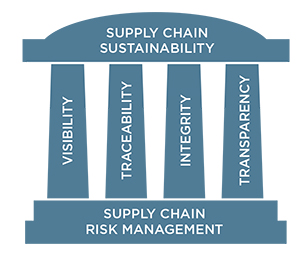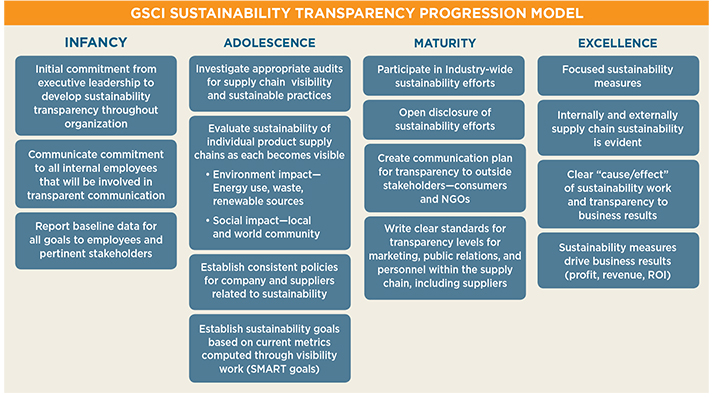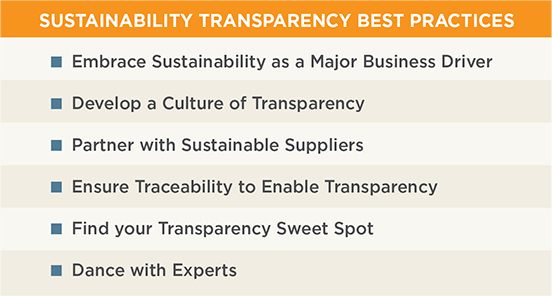In a world clouded by obfuscation, a sharper focus on supply chain transparency has never been more needed.
SCMR was recently reminded about a new study from the University of Tennessee's Global Supply Chain Institute that outlines six key factors to leveraging transparency in supply chains for financial profit.
Written late last year, the UT report notes that companies must first have commitments to sustainability as a major business driver and a culture of transparency driven by executive leadership. Furthermore, the report defines these two elements as “supply chain integrity.”
According to Mike Burnette, director of the Global Supply Chain Institute and a co-author of Creating a Transparent Supply Chain, companies don't need to have their sustainability practices completely figured out, since many see it as a work in process.
“But it is important to establish and stick to a set of ideals and goals on which they communicate progress,” he notes.
While marketing incentives often drive the motivation for transparency, UT's study notes that consumer demand for sustainability creates risk in the supply chain. Partnering with sustainable suppliers and ensuring that product materials are traceable are prerequisites to increased communications with the public.
“Consumers want to know where a product came from, all the way to the Cashmere goat herd on the slopes of the Himalayas,” Burnette said. “A lack of ability to provide that kind of information in the face of safety or environmental violations can create a negative perception of the brand that may require immediate remediation and could take a brand years to recover from, if at all.”
Poor traceability opens companies up to the possibility of slave or child labor, product contamination, pollution of waterways or conflict materials present in their supply chains. Divulging supplier partnerships often involves propriety business information, however, and the report advises finding a sweet spot in communications that engenders trust for both suppliers and consumers.
The SC Johnson Company, one of the best-practice companies interviewed and the sponsor of the report, found that sweet spot allowed much greater communication than executives had expected. Two years ago, SC Johnson announced disclosure of all fragrance ingredients down to 99.9 percent of the product formula as part of its commitment to transparency and enabling its consumers to make more informed decisions.
SC Johnson worked with the International Fragrance Association to establish the ingredients' safety and sustainability, exemplifying the report's final recommendation: employ outside auditing partners. Companies must choose these partners carefully, but they can never hope to replicate the databases of industry information that sustainability coalitions compile.
Creating a Transparent Supply Chain is the third installment in the “Innovations in Supply Chain” series from UT's supply chain faculty. The study was sponsored by SC Johnson
Download the Paper: Creating a Transparent Supply Chain Best Practices
SC
MR


Latest Supply Chain News
- Tech investments bring revenue increases, survey finds
- Survey reveals strategies for addressing supply chain, logistics labor shortages
- Israel, Ukraine aid package to increase pressure on aerospace and defense supply chains
- How CPG brands can deliver on supplier diversity promises
- How S&OP provides the answer to in-demand products
- More News
Latest Podcast

 Explore
Explore
Latest Supply Chain News
- Tech investments bring revenue increases, survey finds
- Survey reveals strategies for addressing supply chain, logistics labor shortages
- Israel, Ukraine aid package to increase pressure on aerospace and defense supply chains
- How CPG brands can deliver on supplier diversity promises
- How S&OP provides the answer to in-demand products
- AI, virtual reality is bringing experiential learning into the modern age
- More latest news
Latest Resources

Subscribe

Supply Chain Management Review delivers the best industry content.

Editors’ Picks








